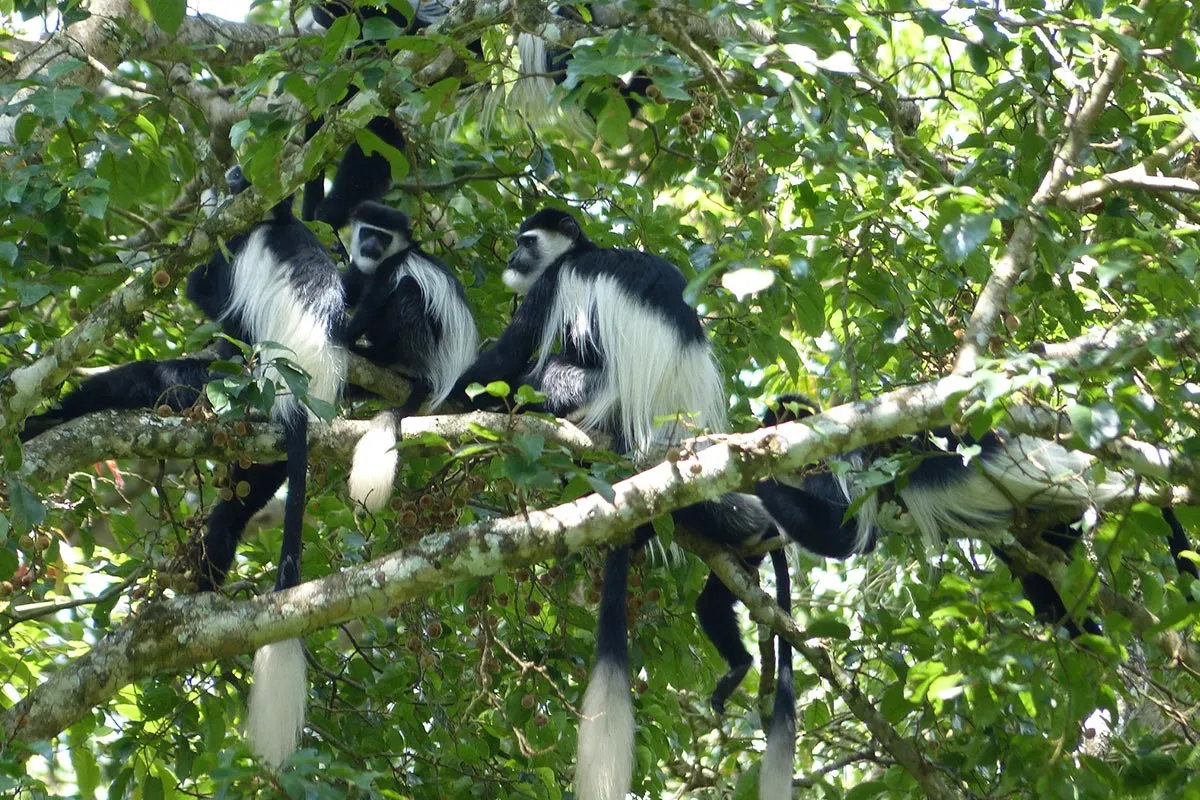The Magnificence of Black-and-White Colobus Monkeys in Uganda: A Glimpse into Their Lives and Conservation Efforts
The Black-and-White Colobus Monkeys (Colobus guereza). Uganda, a country renowned for its breathtaking landscapes and rich biodiversity, harbors a treasure among its fauna—the black-and-white colobus monkeys; These enchanting primates, adorned in striking black and white fur, offer an intriguing insight into the intricate tapestry of Uganda’s ecosystems; This article delves into the lives of these majestic creatures, exploring their habitat, behaviors, and the conservation efforts undertaken to safeguard their existence.
Natural Habitat and Distribution
The black-and-white colobus monkeys (Colobus guereza) find their home in Uganda’s lush forests, including the dense foliage of the Bwindi Impenetrable National Park, Kibale Forest National Park, and Budongo Forest Reserve. These monkeys are arboreal by nature, favoring the canopy for movement and foraging. The diverse landscapes of Uganda provide them with an abundance of food sources and shelter, allowing them to thrive in these regions.
Physical Attributes and Unique Characteristics
Elegantly contrasted in shades of black and white, these monkeys possess a distinctive appearance. Their long, glossy fur and striking coloration set them apart from other primate species. They are recognized by their long tails and expressive faces, adding to their allure.
Social Behavior and Communication
Black-and-white colobus monkeys exhibit complex social structures. They live in groups, usually comprising several females, their offspring, and a dominant male. Their communication involves various vocalizations, including hoots, barks, and chirps, which serve to maintain group cohesion and warn against potential threats.
Diet and Foraging Patterns
Their diet primarily consists of leaves, supplemented with fruits and occasionally flowers. They possess a unique digestive system adapted to efficiently break down the cellulose in leaves, enabling them to thrive on a predominantly folivorous diet. Their foraging patterns are often dispersed, allowing them to cover a wide area within their territories.
Challenges and Conservation Efforts – The Black-and-White Colobus Monkeys (Colobus guereza)
Despite their resilience, black-and-white colobus monkeys face numerous challenges, primarily habitat loss due to deforestation, human encroachment, and hunting. Conservation efforts in Uganda focus on preserving their habitats, educating local communities about the importance of these primates, and establishing protected areas to ensure their survival. These initiatives aim to mitigate the impact of human activities on their natural habitats.
The Importance of Conservation
The preservation of black-and-white colobus monkeys is crucial not only for the sake of biodiversity but also for the health of Uganda’s ecosystems; As seed dispersers and integral parts of the forest ecosystem, their presence plays a pivotal role in maintaining the delicate balance of the environment.
Remarks – The Black-and-White Colobus Monkeys (Colobus guereza)
The black-and-white colobus monkeys in Uganda stand as a symbol of the country’s diverse and rich wildlife. Their captivating appearance, social dynamics, and vital ecological role make their conservation imperative. As Uganda continues to navigate the delicate balance between human development and wildlife preservation, efforts to protect these majestic creatures must remain a priority, ensuring their existence for generations to come.
The charm of these beautiful creatures offers a compelling reason to appreciate and protect the biodiversity that graces Uganda’s landscapes, showcasing the delicate yet resilient nature of the animal kingdom.








